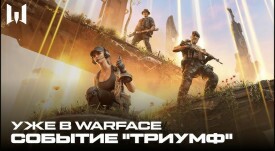
What is the difference between an optimist and a pessimist? First of all, it is faith in the best. So fans of the epic fantasy saga Dragon Age have been eagerly waiting for a whole decade for BioWare to take into account all the mistakes of Dragon Age: Inquisition and give the legendary role-playing series a long-awaited revival. You can find out what this led to in our Dragon Age: The Veilguard review.
Dragon Age: The Veilguard continues the dramatic story of the ancient elven mage Solas, which began in Dragon Age: Inquisition. The player, together with the dwarf Varric, well known from previous parts of the series, will have to stop the crazy plan of an ancient god who intends to destroy the Veil, which separates the world of people and the kingdom of demons.
From the first minutes, the game amazes with improved graphics. The developers have done an impressive job, using the potential of the Frostbite Engine to the maximum. This engine allowed to achieve a level of detail that previously seemed unattainable for the Dragon Age series. The splendor of ancient ruins and majestic spires of cities amaze with their detail. However, behind this external beauty lies a disappointing truth: Dragon Age: The Veilguard is no longer an RPG.
The classic mechanics that ensured the series' recognition for many years have been pushed aside in favor of modern trends in the Western gaming industry. Now the player can no longer set tactics for allies or control them during combat. The combat system has been simplified to the limit, becoming focused on dynamics and spectacle.
Character leveling has also undergone changes. The game has three main classes: warrior, rogue and mage, with three specializations for each. However, despite the appearance of an extensive skill tree, active abilities are practically indistinguishable from each other, with the exception of animation. Even the enemies' resistance to different types of damage doesn't add any variety - in over 40 hours on high difficulty, I didn't find any need to use anything other than the basic skills.
The shortcomings of the leveling system were supposed to be compensated by the equipment improvement mechanics, familiar from Dragon Age: Inquisition. But here too, the developers made a miscalculation. There are practically no options for exchanging equipment between characters. For example, you cannot improve heavy armor and give it to your partner when you find something more suitable. All equipment is strictly tied to factions, and most of it is obtained through the reputation system with NPCs, like in old MMORPGs. Why such a decision was made for a single-player game remains a mystery.
The hunting and crafting mechanics, so important in previous games, have been almost completely removed. Now there is no need to fight dragons, giants or other dangerous creatures to obtain valuable materials. Players will solve simple riddles in desert locations, receiving predetermined rewards. This may irritate those who like deep RPG elements. The new mechanics are more suitable for fans of casual games like Genshin Impact (sarcasm). It seems that the people who worked on Dragon Age: The Veilguard have no idea about RPGs and prefer mobile casuals.
Most of the game's shortcomings could be forgiven if it compensated for them with a gripping story, exciting quests and memorable characters. At times, it seemed to me, the spirit of the old BioWare breaks through the modern trends of tolerance and bright ideas. For example, there is a quest to find a missing tavern owner, which reminds us of the former depth of the plot. However, these rare moments are not enough. Immersion in the game world is constantly disrupted by ridiculous dialogues and visual dissonance in the appearance of the new "heroes".
Don't get me wrong, I'm not trying to be overly critical. Even that weird African character who prefers wearing elven ears and making wooden crafts instead of saving the world doesn't cause any rejection. But imagine that the Order of the Grey Wardens, once made up of seasoned warriors, now has a friendly atmosphere over tea. How can you believe that such characters are capable of stopping the approaching evil? Many fans, like me, remember the lore of the previous parts, and such inconsistencies baffle us.
As for the visual component, it seems that all the efforts of the artists were aimed at creating impressive locations, but there was clearly not enough inspiration for the design of enemies, armor and characters. It is especially painful to watch the changes in the appearance of the dwarf from Dragon Age: Origins - it is simply an insult to fans of the series. The design decisions made in the game feel half-baked and disappointing.
The first trailers made it clear that we were in for a colorful team to save the world, and the expectations were met. However, the allies that were always an important part of the gameplay in Dragon Age are now seen as immortal spell-carrying dummies in The Veilguard. If the player had more active abilities in combat, the allies would have become completely unnecessary. Their personal stories feel trite and superficial: another character possessed by a demon, another heroine tormented by the past, another “strong but fragile inside”. Despite the archetypes these characters follow, I would have liked something fresh after a decade of waiting. Personally, I am tired of these stereotypical characters. An example of this was Taash, whose insults made me never talk to her again.
Warface launches the festive event Triumph in honor of Victory Day: the return of the PvP mode "Arsenal" and a new series of weapons.
The company hopes for a quick resolution to the problem.
FOSSiBOT, a brand founded in 2022 by a team of experts with over 10 years of experience, introduces F112 Pro 5G, the world's first eco-friendly rugged smartphone with a revolutionary approach to design and materials. After two years of development, the company releases a device that combines advanced technology, protection and a responsible attitude to nature.
He will be the last one for the game.



